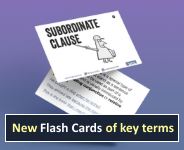Verbs in persuasive language
In this lesson, students will analyse persuasive language in a charity appeal, and then write their own charity appeal. There is a particular focus on the way modal auxiliary verbs can be used to persuade.
Goals
- Identify modal auxiliary verbs.
- Analyse persuasive language.
- Practise writing persuasively.
Lesson Plan
Activity 1
The extract on the Activity 1 slide, in the right hand menu, is from a charity broadcast on Radio 4. It is designed to appeal to its listeners and to persuade them to donate money to support the charity’s aims. Part of this persuasion is achieved by the use of modal auxiliary verbs. Students should identify the modal verbs in the extract by clicking on them, then check their score at the end.
Activity 2
Consider the following questions about the extract in Activity 1:
- What do these modal verbs do in this text?
- How do they help create different meanings?
- How might these meanings be useful to the overall purpose of the appeal?
- What other persuasive devices can you identify in the text?
Activity 3
Now students should write their own charity appeal, using the source material on the Activity 3 slide, in the right hand menu. This is a statement from a charity about their aims and methods. In writing their appeal, encourage students to make use of a range of persuasive devices, including modal verbs.
If students want to see a list of modal verbs to refresh their memory, go to the slide after the source material.
Welcome!

Englicious is totally free for everyone to use!
But in exchange, we ask that you register for an account on our site.
If you’ve already registered, you can log in straight away.
Since this is your first visit today, you can see this page by clicking the button below.
- Printer-friendly version
- Log in to view or leave comments

